The best graphics card in 2024: top GPUs for all budgets
What's the best graphics card for the money right now?
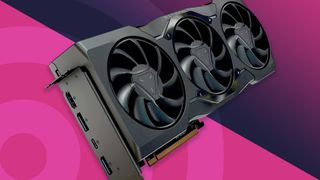
1. Quick list
2. How to choose
3. How I test
4. FAQs
5. Top picks in depth
● Best overall
● Best Nvidia
● Best budget
● Best 4K
● Best 1440p
● Best 1080p
● Best Intel
● Best performance
● Best gaming
The best graphics card can unlock incredible gaming, content creation, and AI development capabilities, regardless of your budget.
With so many options available, finding the perfect fit can be a challenge, especially for first-time buyers. Our top pick, the AMD Radeon RX 7900 GRE, offers an unbeatable balance of performance, price, and resolution, making it ideal for 4K content and 1440p gaming without breaking the bank.
From the high-end Nvidia GeForce RTX 4090 for 4K enthusiasts to the budget-friendly AMD Radeon RX 7600 for 1080p gamers, we've extensively tested over three dozen graphics cards in the last 18 months to help you find the best graphics card for your needs and budget, whether you're a gamer, content creator, AI enthusiast, or all fo the above.
The Quick List
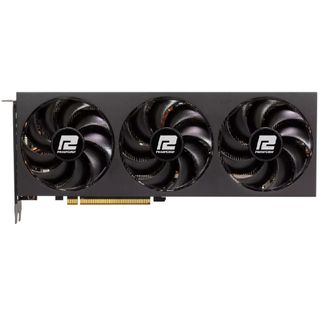
Value |★★★★☆
Features |★★★★★
Performance|★★★★★
The AMD Radeon RX 7900 GRE surprised me earlier this year as the perfect balance of performance and affordability, making it an easy pick as the best graphics card overall.

Value |★★★★☆
Features |★★★★★
Performance|★★★★★
While the RTX 4070 Super doesn't pack the same performance as the best 4K cards, its 1440p performance is outstanding, and Nvidia's DLSS 3 is a true game-changer.
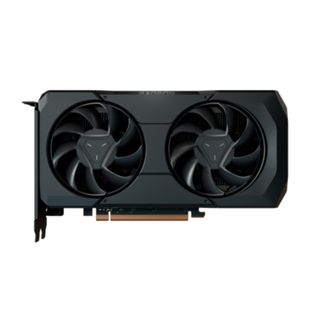
Value |★★★★★
Features |★★★★☆
Performance|★★★★☆
If you want the best graphics card by price, then this is it, matching stellar 1080p performance with value.

Value |★★★★☆
Features |★★★★★
Performance|★★★★★
The Nvidia RTX 4080 Super offers performance second only to the mighty RTX 4090, and does so at a much cheaper price than the RTX 4080 that replaces it, making it the ideal 4K card for enthusiasts.
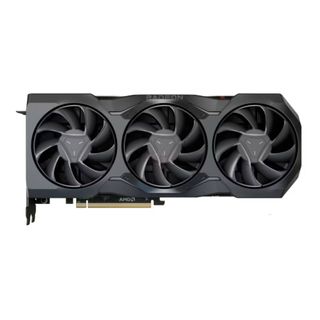
Value |★★★★★
Features |★★★★☆
Performance|★★★★★
The AMD Radeon RX 7800 XT is nearly as perfect a 1440p graphics card as you're going to find on the market right now, though it's still too close to the 7900 GRE in price for my liking.
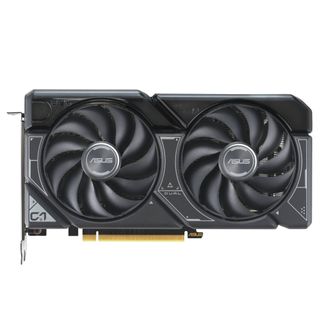
Value |★★★★★
Features |★★★★★
Performance|★★★★☆
The RTX 4060 is a fantastic card that's easy to find under $300/£300, which is less than some RTX 3060s sell for, and with new features like DLSS 3, this is the best 1080p card going.
Load the next 3 products...
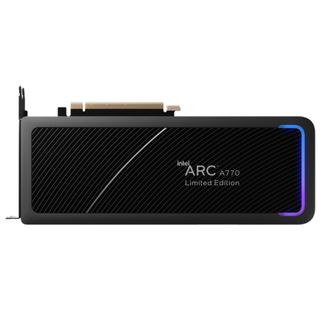
Value |★★★★★
Features |★★★★☆
Performance|★★★☆☆
Team Blue has finally brought its graphics engine into an add-in graphics card, offering great performance for the price, though older games might suffer from driver conflicts.
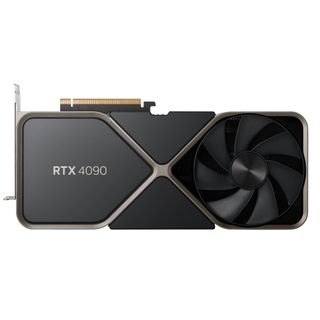
Value |★★★★☆
Features |★★★★★
Performance|★★★★★
The Nvidia RTX 4090 is undeniably the most powerful GPU around, but its price makes it prohibitive for most, though its performance-per-dollar makes it among the best values going.
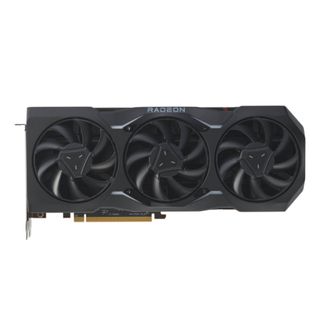
Value |★★★★☆
Features |★★★★★
Performance|★★★★★
The AMD Radeon RX 7900 XTX is an absolute gaming dynamo with fantastic 4K performance at an acceptable price for enthusiasts, but it's still a premium offering.
Recent updates
This guide was updated on April 20, 2024, to add the AMD Radeon RX 7900 GRE as the best graphics card on this list, as well as update benchmark data for each entry.

John has been working with computers since he was a teenager, long before he ever started writing about computer hardware or working on his Master's degree in Computer Science. Needless to say, he knows computers inside and out, and he has personally tested (and retested) all of the graphics cards on this page, regardless of whether he wrote our original review, and has validated the results you'll find here.
How to choose the best graphics card for you
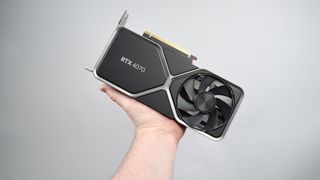
There are a couple of important things to consider when buying a graphics card, with the first and foremost being your monitor resolution. If you have a 1080p monitor, then a 4K graphics card is going to be far more powerful that you probably need, and since 1080p graphics cards are much cheaper, buying something more powerful than your monitor can handle is a waste of money.
For 1080p, you should look at the AMD Radeon RX 7700 XT or Nvidia RTX 4060 Ti and lower. These two cards are the high end of what the best 1080p graphics card will offer you, but the AMD Radeon RX 7600 is still excellent for 1080p use.
For 1440p, you should consider the AMD Radeon RX 7800 XT or Nvidia RTX 4070 Super or RTX 4070. The AMD Radeon RX 7700 XT can also hold its own at 1440p, and the Intel Arc A770 and Arc A750 are also good choices for 1440p performance on a tighter budget.
For 4K, you will need a minimum of an AMD Radeon RX 7900 GRE or Nvidia RTX 4070 Ti, though realistically, you'll need an AMD Radeon RX 7900 XT or Nvidia RTX 4070 Ti Super to get good enough 4K performance. The RX 7900 XTX and RTX 4080 Super are also fantastic choices in this category, though skip the base RTX 4080 unless you can get it for less than a grand.
For creatives, generally speaking, the Nvidia RTX lineup is going to give you better creative performance for video editing and 3D modeling, while the AMD Radeon cards are slightly better at dealing with rasterization workloads like Adobe Photoshop. Serious video or 3D creatives will need at least an Nvidia RTX 4070 Ti Super, as it has 16GB VRAM for chewing through creative pipeline workloads. Photographers and graphic designers can get by with much less, like an RTX 4070 or RX 7700 XT, though the RX 7800 XT and RX 7900 GRE are also both good options.
For gaming, AMD has generally been better during this generation when it comes to gaming performance, especially now that AMD FSR 3 introduced Fluid Motion Frames to compete with Nvidia's DLSS 3 Frame Generation tech. AMD's cards still lag Nvidia's when it comes to ray tracing, but that difference has considerably narrowed into a difference of a handful of frames between the two, in my experience.
For AI/Machine Learning, I don't really have to tell you that you need to get an Nvidia card. Nvidia's tensor cores are simply light-years ahead of what AMD and Intel can offer, and most ML tools expect you to be using Nvidia hardware, so you'll just have to lean into this one. If you're a more casual researcher or hobbyist, something with 12GB VRAM is good enough, but any Nvidia cards with 16GB VRAM or higher are preferred, even if they're last-gen cards like the Nvidia RTX 3090 Ti.
How I tested the best graphics cards

When it comes to the best graphics cards, it's incredibly important to make sure I'm testing everything on an equal playing field. That's why, whenever a new graphics card comes out, I test it with a suite of around 7-10 games and across several resolutions, all on current drivers.
That means that I re-test all current-generation graphics cards (as well as last-gen cards if a card is replacing an existing card in the market) in a given card's performance class or market segment for each review. I make sure that all of the cards are tested on the same hardware, which means the same processor, the same memory at the same speed, the same motherboard, and the same SSD. That way, I can be sure that I'm measuring how the graphics card itself is performing relative to other cards. I also make sure to use the best possible components for my testing to give each graphics card I benchmark the most amount of room to perform at its best without worrying about CPU, RAM, or SSD bottlenecks.
I make sure to log how much power each card is consuming as well as the temperatures it reaches under load to make sure we can recommend it to people who may be concerned about high power draw or system temperatures.
I examine any new features that a card might introduce or might be able to leverage for the first time, such as new updates to their upscaling tech, and compare these to rival cards in its class.
Finally, I gather scores across Synthetic, Creative, and Gaming categories using system tools like 3DMark, PugetBench for Creators, and built-in gaming benchmarks like Cyberpunk 2077's. In each category, I use a geometric mean formula to average scores to reduce the weight of extreme outlier test results (so averaging a score of 200,000 and 5,000 isn't as dramatically skewed) to come up with a final score for that category.
I then take the geomean of the three category scores, mitigating somewhat the outsized values of synthetic benchmarks with scores in the tens or hundreds of thousands that can overpower gaming benchmarks that report results in double or triple-digit values. This geomean gives us a card's final score, which I then divide by its US MSRP to come up with its final value score.
The best graphics card: FAQs

Which graphics card is best for gaming?
Generally speaking, the best graphics card for gaming is going to depend on several factors, but principally, your budget and monitor resolution will dictate the best card for gaming on your system.
For 4K gaming, the AMD Radeon RX 7900 XTX is as good as it gets, while the AMD Radeon RX 7800 XT is the best 1440p graphics card. For 1080p, the Nvidia RTX 4060 is the way to go, while the AMD Radeon RX 7600 is the best budget graphics card of this generation, though the Intel Arc A770 and Intel Arc A750 offer compelling alternatives for the budget-conscious.
What is the best brand for graphics cards?
The age-old question of whether Nvidia or AMD is the best brand for graphics cards will likely never go away, especially now that Intel is also throwing its hat into the GPU ring.
Right now, AMD and Nvidia are basically on equal footing, though AMD's cards this generation have been especially strong. Intel is on its first generation of discrete graphics cards, so there are a lot of growing pains there still to be worked out.
Generally, if you like ray tracing, Nvidia will probably have the edge for you, while AMD offers great rasterization and gaming performance while generally being cheaper.
The best graphics card in 2024: in-depth

Below, you'll find detailed write ups for each of the best graphics card picks on this list. I've extensively tested each of them and have the gaming and other performance data you need to make the right choice for your needs and budget.
The best graphics card in 2024
Why you can trust TechRadar
The best graphics card overall





Specifications
Reasons to buy
Reasons to avoid
✅You want fantastic overall performance: Other than 3D modeling work, this card has some of the best performance at this price I've ever seen.
✅You don't want to spend a fortune on a great graphics card: While this is still a pricier midrange offering, it's cheaper than Nvidia's rival card and sits just within range of what gamers are likely willing to spend on a new GPU.
✅You want some creative performance as well: While its 3D modeling performance is lacking, it's fantastic with photo editing, video processing, and other creative workloads.
❌ You're not looking to game at 4K: If all you plan on doing is gaming at 1440p, the RX 7800 XT or RX 7700 XT might be better options that'll save you a good bit of money.
❌ You do a lot of 3D modeling work or machine learning research: AMD isn't the best when it comes to 3D modeling, which is tied heavily to Nvidia's CUDA graphics language, and this card isn't immune to that deficit. Likewise, its AI/machine learning hardware lags behind Nvidia's tensor cores.
The AMD Radeon RX 7900 GRE is a game-changer in the midrange GPU market, offering an unbeatable combination of performance and features that puches way above its price point. From 4K gaming to dabbling in machine learning, the RX 7900 GRE is, on balance, the best graphics card you can buy right now.
Originally launched as a China-only exclusive, the RX 7900 GRE is now available globally starting at $549, making it a direct competitor to the weaker Nvidia RTX 4070 while going toe-to-toe with the more expensive RTX 4070 Super and even coming out on top in some key areas.
My benchmarking shows that this card excels in rasterization and shows strong ray tracing performance that narrows the gap between AMD and Nvidia in this market segment. In gaming especially, it actually manages to surpass the RTX 4070 Super when upscaling is turned on, which is a real testament to how for AMD's FSR upscaling technology has come.
Additionally, it's a capable creative card, making it an excellent choice for graphic designers, photographers, and video editors, though 3D modeling is still this card's Achilles' heel when it comes to content creators.
While it may not completely outperform the RTX 4070 Super, overall it is a surprisingly powerful card that offers incredible value for its price.
Read the full AMD Radeon RX 7900 GRE review
The best Nvidia graphics card





Specifications
Reasons to buy
Reasons to avoid
✅You want fantastic midrange performance: Given the strength of this card in all categories, on balance, it's one of the best graphics cards you're going to find in the midrange.
✅You want very strong ray tracing performance: With the maturity of its ray tracing cores, the RTX 4070 Super is the best ray tracing GPU in the midrange, for sure.
✅You want some creative performance as well: With its strong CUDA backbone, the RTX 4070 Super is a great option for those looking to get into creative content work.
❌ You don't want to spend a fortune: Given the price of the competition, there are better graphics cards for your money than the RTX 4070 Super
❌ You don't care about ray tracing or compute performance: The strongest assets this card brings to the table are its ray tracing and tensor cores, but if you don't care about ray tracing or machine learning tasks, the RX 7900 GRE will offer a better overall gaming performance.
The Nvidia GeForce RTX 4070 Super meets the high expectations we had for this card when it was announced at CES 2024, offering compelling performance at the same price as its predecessor.
This newcomer outshines the RTX 4070, offering more SMs for enhanced processing and a swifter base clock speed. However, its 12GB GDDR6X VRAM limits its 4K prowess, so for optimal 4K performance, the Nvidia RTX 4080 Super is a better bet. For top-tier 1440p gaming, though, the RTX 4070 Super excels thanks to its robust specs, DLSS 3 with Frame Generation, and Nvidia Reflex technology.
And while the RTX 4070 Super generally outperforms the RX 7800 XT, particularly in ray tracing, AMD holds the edge in gaming performance with the RX 7900 GRE, especially now that AMD's frame generation tech for FSR has hit the scene.
Despite stiff competition, the Nvidia GeForce RTX 4070 Super still stands out as the best Nvidia graphics card for most people, especially for midrange users seeking a balance of gaming prowess, content creation capabilities, and sheer performance.
Read the full Nvidia GeForce RTX 4070 Super review
The best budget graphics card





Specifications
Reasons to buy
Reasons to avoid
✅ You want outstanding 1080p performance: In 1080p gaming, especially straight rasterization performance, this card is absolutely fantastic.
✅ You want to dabble at 1440p: You won't be able to do everything at 1440p, but with tweaks, you can get some great QHD gaming.
✅ You're on a tighter budget: This is definitely one of the best cheap graphics cards you can buy right now.
❌ You want heavy ray tracing in your games: While the ray tracing is better than its predecessor, it's not all that great on this card.
❌ You want a cheap creative graphics card: With 64 AI cores, you might be tempted to use this card for creative workloads, but it's going to struggle.
The AMD Radeon RX 7600 is here to bring AMD RDNA 3 to the under-$300/£300 segment, and it's got plenty of performance despite its lower price tag.
Its 1080p performance is absolutely fantastic for the price, even giving the Nvidia RTX 3060 Ti 12GB a run for its money. Its 1440p performance is also pretty decent considering that the card only has 8GB VRAM and a 128-bit memory bus.
In terms of gaming performance, you can easily get 60 fps on all of the best PC games at 1080p, with most of those running on the highest graphics settings. For more demanding games like Cyberpunk 2077, there might need to be some settings tweaks, but it's still definitely doable, especially with AMD's FidelityFX Super Resolution.
Its ray tracing performance is still behind Nvidia's last-gen midrange cards, but RDNA 3 has closed much of the gap between the two, so you don't have to sacrifice ray tracing completely just by going with a cheaper AMD card.
Read the full AMD Radeon RX 7600 review
The best 4K graphics card





Specifications
Reasons to buy
Reasons to avoid
✅ You want great 1440p performance: In 1080p gaming, especially straight rasterization performance, this card is absolutely fantastic.
✅ You're on a budget: For a card with this level of performance, the overall value is its biggest selling point.
✅ You want hardware ray tracing and upscaling: Intel's hardware ray tracing and AI processors are surprisingly powerful for a first-generation graphics card.
❌ You want to play older PC games: Intel's graphics driver has gotten much better, but it still lags behind Nvidia and AMD on older titles.
❌ You want a powerful creative GPU: While Intel's hardware is great, it's not very good for creative work.
❌ You don't want to deal with Intel's growing pains: Intel is constantly improving its drivers and game support for Arc graphics cards, but there are still bumps along the way that you might not want to deal with.
The Nvidia GeForce RTX 4080 Super is a powerhouse of a graphics card, offering unparalleled 4K performance at its sub-$1000/£1000/AU$1,500 price point.
With a 1.4% performance gain over the RTX 4080 and a 7% advantage over the AMD Radeon RX 7900 XTX, this card is the perfect choice for enthusiasts seeking top-notch 4K graphics. It even comes close to the RTX 4090's performance, at a 40% lower cost.
The RTX 4080 Super is, on balance, the best 4K graphics card available, making it an ideal choice for those seeking exceptional 4K performance without breaking the bank.
Its impressive performance and competitive pricing make it a standout option in the market, and its sleek design (at least for the Founders Edition from Nvidia) makes it a showpiece for those who want to flaunt their gaming setup.
While it may not be the best choice for those on a budget or seeking mid-range options, the RTX 4080 Super is a premium purchase that delivers exceptional results.
Read the full Nvidia GeForce RTX 4080 Super review
The best 1440p graphics card





Specifications
Reasons to buy
Reasons to avoid
✅ You want outstanding 1440p performance: This card has serious 1440p gaming chops, especially at this price.
✅ You don't want to completely sacrifice ray tracing: AMD is finally offering both great rasterization and ray tracing performance.
✅ You're tired of Nvidia's GPU price inflation: The RX 7800 XT isn't cheap, but its price is far more reasonable than Nvidia's RTX 4070.
❌ You are looking for the best creative GPU: The introduction of AI accelerators certainly help this card, but Nvidia still dominates creative workloads.
❌ You want the best ray tracing and upscaling possible: If ray tracing and upscaling are your bag, then the RTX 4070 Super is going to be the better buy here.
❌ You're on a tight budget: While this card is much cheaper than its direct competition, it's still not close to what anyone would call 'cheap'.
The AMD Radeon RX 7800 XT is Team Red's midrange flagship graphics card, and it's a very powerful performer, especially for the price.
Powered by AMD's RNDA 3 GPU architecture, it boasts 16GB of GDDR6 VRAM and a wide memory bus, making it capable of handling high-res 1440p textures with ease, and can even dabble in 4K gameplay with the right settings.
Going head-to-head with the GeForce RTX 4070, the RX 7800 XT emerges with a slight 2% advantage in overall gaming performance. This is especially true in rasterization, though the RX 7800 XT offers impressive ray tracing capabilities, making it a top-notch choice.
Its lower MSRP compared to Nvidia's rival card makes it an excellent value, offering outstanding performance at a great price. Despite some limitations in gen-on-gen performance, the RX 7800 XT stands out as one of the best 1440p graphics card options on the market right now, and for the price, midrange gamers everywhere will absolutely love what AMD is offering here.
Read the full AMD Radeon RX 7800 XT review
The best 1080p graphics card





Specifications
Reasons to buy
Reasons to avoid
✅ You want the best 1080p gaming under $300: This card is a 1080p champ in its weight class, even if it walks right up to the line of the middle midrange.
✅ You want fantastic ray tracing support: Nvidia pioneered real-time ray tracing in games, and it really shows here.
✅ You want next-gen features like DLSS 3: Nvidia's hardware is state-of-the-art in the GPU market, and you get to have it at a great price here.
❌ You want the best value: While the RTX 4060 is very well-priced, the AMD RX 7600 offers a much better price-to-performance ratio.
❌ You don't care about ray tracing or upscaling: Ray tracing is honestly overrated and a lot of games don't offer or even need upscaling, so you might not need this card's best hardware.
The Nvidia RTX 4060 has frustrated some folks out there who were looking for the kind of gen-on-gen performance uplift we saw with more expensive Nvidia Lovelace offerings like the RTX 4070, but these demands are misplaced.
The RTX 4060 is a fantastic midrange graphics card that's easy to find under $300/£300 right now, which is less than some Nvidia RTX 3060 cards still on the market. It's not the kind of card that will blow you away if you already have an RTX 3060 or better, but if you're coming from older Nvidia or AMD hardware (as most gamers will be), this card will be nothing short of a revelation, all for less than the launch price of the RTX 3060 it replaces.
It's not a perfect card, obviously. It's biggest misfire is the 8GB VRAM and 128-bit memory bus, which pretty much limits how much performance you'll be able to squeeze out at 1440p, but it's still doable, especially with the advances that DLSS 3 brings to the table.
- Read the full Nvidia GeForce RTX 4060 review
The best Intel Graphics Card





Specifications
Reasons to buy
Reasons to avoid
✅ You want great 1440p performance: In 1080p gaming, especially straight rasterization performance, this card is absolutely fantastic.
✅ You're on a budget: For a card with this level of performance, the overall value is its biggest selling point.
✅ You want hardware ray tracing and upscaling: Intel's hardware ray tracing and AI processors are surprisingly powerful for a first-generation graphics card.
❌ You want to play older PC games: Intel's graphics driver has gotten much better, but it still lags behind Nvidia and AMD on older titles.
❌ You want a powerful creative GPU: While Intel's hardware is great, it's not very good for creative work.
❌ You don't want to deal with Intel's growing pains: Intel is constantly improving its drivers and game support for Arc graphics cards, but there are still bumps along the way that you might not want to deal with.
The Intel Arc A770 has emerged as a refreshing competitor in the longstanding AMD vs Nvidia duopoly, offering surprisingly competent performance for a first attempt by Intel at a discrete flagship graphics card. Beyond the desire for market variety, the A770 genuinely stands out for its impressive features and competitive pricing.
After extensive testing, I found that there was significant improvement over its fellow launch card, the Intel Arc A750, which did not fare too well in my review after encountering some driver-related setbacks. Now, it seems that Intel has made very substantial strides in improving the stability, compatibility, and overall performance of its Arc series, and there is undoubtedly more to come.
The A770's performance, while not on par with the best AMD graphics card in the midrange, is actually commendably close to the Nvidia GeForce RTX 4060 Ti, particularly in areas like ray tracing and hardware upscaling. This allows the 16GB Arc A770 card I reviewed to venture into 4K gaming, achieving an average of 35 fps over several PC game benchmarks, with a 1% low average of 26 fps. While not groundbreaking, with some settings adjustments, this performance can be optimized for smoother gameplay at 4K. Its 1440p performance was even more solid, and its 1080p performance is even better still.
The card does exhibit some challenges, especially concerning optimization for older DirectX 9 and 10 titles, but after having nailed down a lot of the issues with more modern titles, Intel has said publicly that improving DirectX 9 and DirectX 10 support is a major priority for the Intel discrete graphics team. While all that shakes out, hoever, you've still got a very budget-friendly GPU that can hold its own against many of the best graphics cards on and off this list, making the Arc A770 a great value options for gamers.
Read our full Intel Arc A770 review
The best graphics card for performance





Specifications
Reasons to buy
Reasons to avoid
✅ You want the best graphics card on the market: There really is no competition here. This is the best there is, plain and simple.
✅ You want native 4K ray-traced gaming: This is literally the only card that can consistently run full ray tracing at native 4K resolution.
✅ You are a 3D graphics professional: If you work with major 3D rendering tools like Maya, Blender, and others, this is your graphics card.
❌ You're not looking to do native, max-4K gaming: Unless you work for Pixar or Industrial Light & Magic, you probably don't need this card.
❌ You're on a budget: This card is incredibly expensive, even on sale.
❌ You're concerned about power consumption: With a TGP of 450W, this card has a near-bottomless appetite for power.
Yes, the Nvidia GeForce RTX 4090 is expensive. It also requires a 16-pin connector or adapter. And, it’s very, very big. But, the first release from Nvidia’s new 4000-series is an absolute powerhouse that can tackle anything you need it to. It is the most powerful GPU out there, and likely will be for a very long time to come.
In our testing, we found it performed significantly better than the Nvidia GeForce RTX 3090 with two to four times the performance in synthetic benchmarks and up to 100% improved framerates with some games. What’s more, DLSS 3 is a revolution in terms of gaming frame rates, and in games that support it, the RTX 4090 with Frame Generation turned on will absolutely push even the best gaming monitors to the limit of what they can do.
That said, this is far more GPU than most people will probably ever need this decade, and at the price its selling for, you have to really, really want this card, especially at the prices it is selling for right now. If you simply have to have the most powerful graphics card there is, however, this is the card you want.
Read the full Nvidia GeForce RTX 4090 review
The best graphics card for gaming





Specifications
Reasons to buy
Reasons to avoid
✅ You want a premium graphics card for under a grand: While it's MSRP is 'under $1,000', it's only just barely clearing that bar.
✅ You want outstanding 4K gaming performance: The AMD RX 7900 XT delivers outstanding 4K gaming with settings maxed out.
✅ You want to future-proof your rig for fast 8K gaming: The RX 7900 XTX is prepared to tackle 8K gaming when it starts coming into its own over the next few years.
❌ You are a Blender head: Seriously, if you need Blender for work or for hobbyist 3D modeling, you should buy the RTX 4090.
❌ You want the fastest possible fps, no matter the cost: FSR 2.0 on the RX 7900 XTX is fantastic, but DLSS 3 with Frame Generation simply outperforms AMD's tech by a wide margin.
❌ You're on a budget: The AMD Radeon RX 7900 XTX is a premium graphics card with a premium price, and there are great cards that are cheaper.
The AMD Radeon RX 7900 XTX had a lot to prove when it hit the scene at the end of 2022. It succeeds brilliantly, coming in as the most powerful gaming GPU on the market for under $1,000, while outperforming Nvidia's RTX 4080 overall despite being substantially cheaper.
The new 2nd-gen ray accelerators in the RX 7900 XTX makes 4K gaming on ultra settings with ray tracing a reality on an AMD card, something that the last flagship AMD card, the RX 6950 XT, couldn't quite accomplish. Its rasterization performance is also second only to the goliath that is the RTX 4090, but that is really an industrial strength GPU in consumer hardware's clothing.
It's not without faults, including falling behind the Nvidia RTX 4000-series in terms of ray tracing (while still beating out the RT performance of the Nvidia RTX 3090) and some uneven creative workload performance. But overall, this is the one graphics card we would recommend to any gamers out there who are looking to finally upgrade their GPU after years of graphics card shortages and they're willing to pay the relatively cheaper premium for it.
Read the full AMD Radeon RX 7900 XTX review
Today's best graphics card deals
Get daily insight, inspiration and deals in your inbox
Get the hottest deals available in your inbox plus news, reviews, opinion, analysis and more from the TechRadar team.

John (He/Him) is the Components Editor here at TechRadar and he is also a programmer, gamer, activist, and Brooklyn College alum currently living in Brooklyn, NY.
Named by the CTA as a CES 2020 Media Trailblazer for his science and technology reporting, John specializes in all areas of computer science, including industry news, hardware reviews, PC gaming, as well as general science writing and the social impact of the tech industry.
You can find him online on Threads @johnloeffler.
Currently playing: Baldur's Gate 3 (just like everyone else).